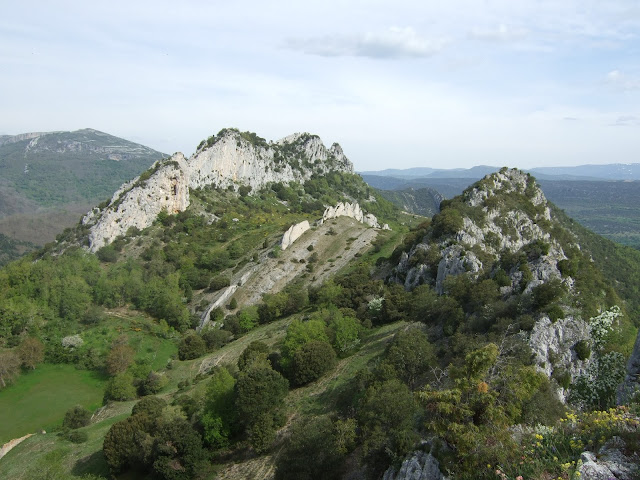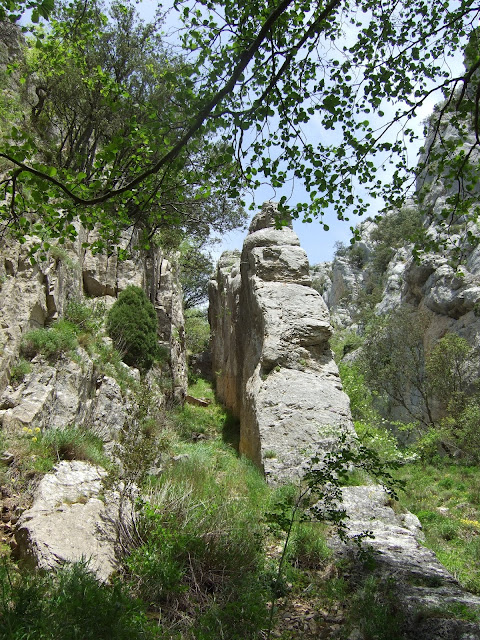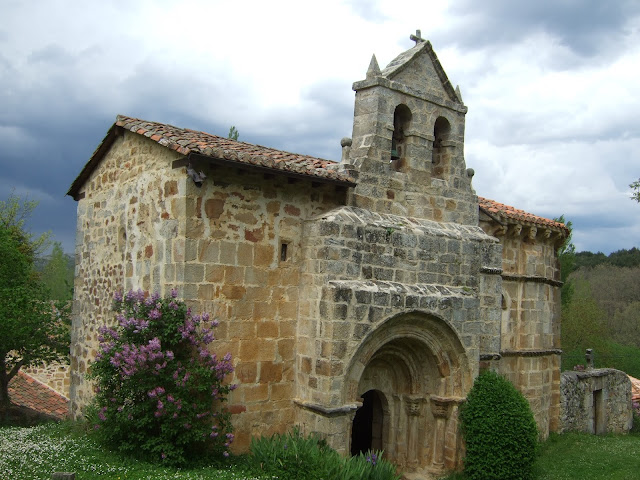Irises and buddleia beside the road as we set off from a village in north Burgos
Salimos del pueblo de Arreba in Valle de Manzanedo
We took a path up to the castle ruins
En seguida cogimos un sendero para subir hasta las ruinas del castillo
Views from the top
Las vistas desde arriba
Monty looking down towards the track we would shortly be following
Monty mira hacia donde íbamos a andar poco después
And from that track a look back up to the ruins
Desde esa pista miramos atrás para ver las ruinas
On the way to a small village called Consortes. The call of a cuckoo accompanied us throughout the first half of the walk - the first one I'd heard in 2016 - which gives an indication of how few hikes there have been this year.
Camino del pueblo de Consortes. Durante esta primera parte del paseo nos acompañaba el canto continuo del cuco. Siempre me produce un efecto placentero oírlo, a pesar del comportamiento tan particularista de este pájaro.
And thence to Lándraves in Valle de Valdebezana
De allí seguimos a Lándraves, ya en el Valle de Valdebezana
where we followed a path signposted as a GR towards the Palancas Ravine
allí seguimos las indicaciones de la GR hacia el desfiladero de las Palancas
I'd just seen my first ever (surprisingly big) crayfish near Lándraves, but unfortunately didn't have time to get the camera out before it scuttled under a rock
Acababa de ver por primera vez en la vida en cangrejo de río, que no se parecía nada a un cangrejo, sino más bien a una langosta. Sólo lo vi cuando se movió, y por supuesto ¡no conseguí sacar la cámara a tiempo! Sólo en casa pude comprobar qué había visto.
This blue dragonfly caught my eye
Lo que sí me dio tiempo a fotografiar era esta libélula
This was the main attraction of the walk
Llegamos a la parte más llamativa de la ruta
Looking back from the end of the ravine
Una mirada atrás desde el final del desfiladero
We then walked up to Munilla, where we would change direction to head back towards the south
Luego subimos hasta el pueblo de Munilla, donde cambiaríamos de rumbo para volver hacia el sur.
We made a slight detour on arriving in Munilla to walk up to the left to see these medieval graves
Subimos un momento a la izquierda al llegar al pueblo para ver estas tumbas medievales
Looking back towards where we came out of the ravine in the centre. Halfway up on the left a small rocky outcrop marks the spot where the graves lie.
Ya enfrente de Munilla, se ve donde salimos del desfiladero en el centro de la imagen. A la izquierda, unas rocas que parecen estar a la mitad de una ladera indican donde están las tumbas.

Around this time the sound of thunder became the main backdrop, only punctuated by a woodpecker drilling away at a nearby tree.
Empezábamos a escuchar truenos, y más cerca, un pájaro carpintero cogió el relevo al cuco.
We entered the beautifully kept village of Crespos
Entramos en el pueblecito bien conservado de Crespos
y visitamos su bonita iglesia románica, que se encontraba abierta - a diferencia de lo que parece ser lo habitual.
On the way back to Arreba I was taken by the beams that remained from this old building in ruins
Volviendo a Arreba, al pasar delante de este edificio en ruinas, me llamaba la atención cómo se resistían las vigas.
We stopped for a moment on the drive back by the Ebro reservoir to take a photo of the approaching storm - which broke just moments later.
Paramos un momento durante el trayecto de vuelta al lado del embalse del Ebro para sacar alguna foto de la tormenta que se acercaba - de hecho tardó segundos en estallar.




























